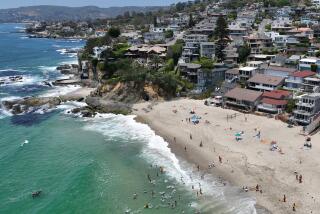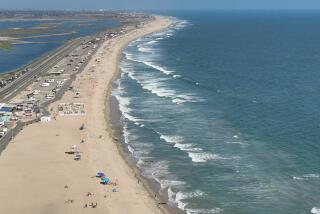Driving Away Tradition From Daytona Beach
- Share via
A venerable tradition drove off into the sunset this month when Daytona Beach, Fla., banned cars from the sands of the “world’s most famous beach,” just in time for the spring break throngs. It had been one of only a handful of U.S. beaches that permit driving and parking on the sand.
The area affected is along the boardwalk, band shell and Main Street Pier--the heart of the beach action. The ban is part of a $200-million effort to revitalize the area and create a “family-friendly” zone, said Joe Wooden, deputy beach chief for Volusia County. Driving is still permitted on 16 miles of the county’s 40-plus miles of beach, the largest sandy stretch in Florida, he said, adding: “Our goal is to always have some areas where you can drive.”
People have been driving on Volusia County beaches since about 1902, he said. Auto magnates Henry Ford and Ransom Olds tested their early vehicles on the hard-packed sands while wintering in Florida. The annual Daytona Beach races, now held at Daytona International Speedway, began on the beach.
As the population grew, the quaint tradition turned into a bit of a parking lot. On a busy weekend, more than 10,000 cars jam local beaches, officials said. Four years ago, the county banned cars from nine miles of beach after environmentalists sued it for endangering sea turtles. It also has banned night beach driving.
A 1,500-space parking garage across from the beach opened March 1, when the driving ban took effect. Visitors park ($5 per day) and take a free tram to the beach. The revitalization effort includes a water park and entertainment complex opened in 1998, a 300-suite condominium and hotel to open next year, a shopping-movie-restaurant complex also to open next year and expansion of the city’s convention center.
More to Read
Sign up for The Wild
We’ll help you find the best places to hike, bike and run, as well as the perfect silent spots for meditation and yoga.
You may occasionally receive promotional content from the Los Angeles Times.






